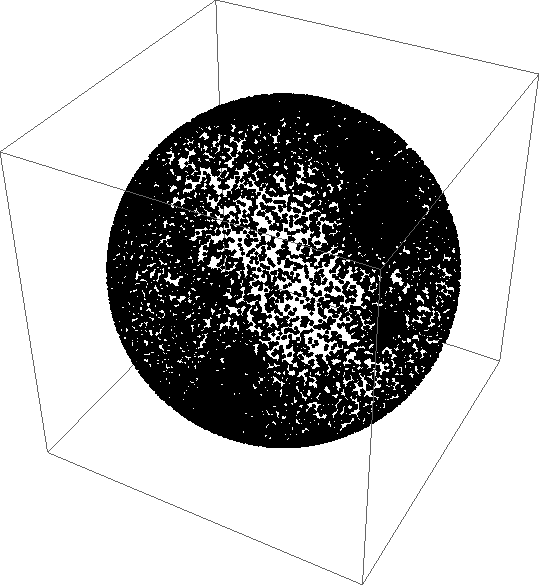As Alexandre points out, if every critical point of a rational function is pre-periodic, then the Julia set of the function is the entire Riemann sphere. This is stated as Theorem 4.3.1 in Beardon's Iteration of Rational Functions. A simple example is
$$f(z) = (z-2)^2/z^2$$
whose only critical points are $0$ and $2$ and satisfy
$$2\rightarrow0\rightarrow\infty\rightarrow1\rightarrow1.$$
Unfortunately, this is a rather narrow criterion in that there may be many functions with full Julia set (i.e., the whole Riemann sphere) that don't satisfy the criterion.
There is, in principle however, a necessary and sufficient condition for a rational function to have full Julia set: There simply needs to be one point whose orbit is dense in the Riemann sphere (Thm 4.3.2 of Beardon). While I suspect this is impractical to use in a proof, it's simple to use as numerical evidence when you are unable to find attractive periodic orbits. Applying this to your function, I obtained the following picture which plots the first $20,000$ points of a random orbit on the Riemann sphere. I include the Mathematica code since I think it's quite simple and illustrates the idea.
f[z_] = -2/3*z + (-2*z^3 + 1)/(3*z^3 + 5*z);
pts = {Re[#], Im[#]} & /@ NestList[f, RandomComplex[], 20000];
pts3D = pts /. {x_, y_} -> {2 x, 2 y, (x^2 + y^2 - 1)}/(1 + x^2 + y^2);
Graphics3D[Point[pts3D]]

Definitely not proof of a dense orbit but compelling enough that I wouldn't spend my resources looking for very long attractive behavior. A similar picture is generated by the other example.
In order to appreciate this, it might be instructive to look at another example with no attractive orbits:
$$f(z) = (z^3 - z)/(-z^2 + 4 z + 1).$$
This function has parabolic fixed points at $0$ and $\infty$ both with multiplier $-1$. Furthermore, all critical points lie in the basins of these two points. Thus, you're not going to find attractive orbits. A million iterates from a random complex point for this function looks something like so on the Riemann sphere:

Quite different.
There is one other approach that might be fruitful - you might place your example in a parametrized family of functions, say:
$$f_{\lambda}(z) = \lambda\left(-2/3*z + (-2*z^3 + 1)/(3*z^3 + 5*z)\right).$$
We can now search for values of $\lambda$ where some attractive behavior is detected. It's not too hard to prove that $\infty$ is an attractive fixed point whenever $\lambda>3/2$. Thus, for all $\lambda\leq3/2$, we iterate from all six critical points of $f$ in search of attractive behavior. In the image below, the black region indicates that no attractive behavior was detected at all. The lighter shaded region indicates that some attractive behavior was detected. For each critical point, we iterate up to 250 times until an attractive orbit of length up to 25 is detected; we then add up those six values and shade according to that sum. Thus, a very light shade indicates that all six critical points converged quickly to an orbit.

Of interest for your question is the fact that the small yellow dot at the point $\lambda=1$ appears to be wholly contained in the black region. Again, not proof, but compelling.



